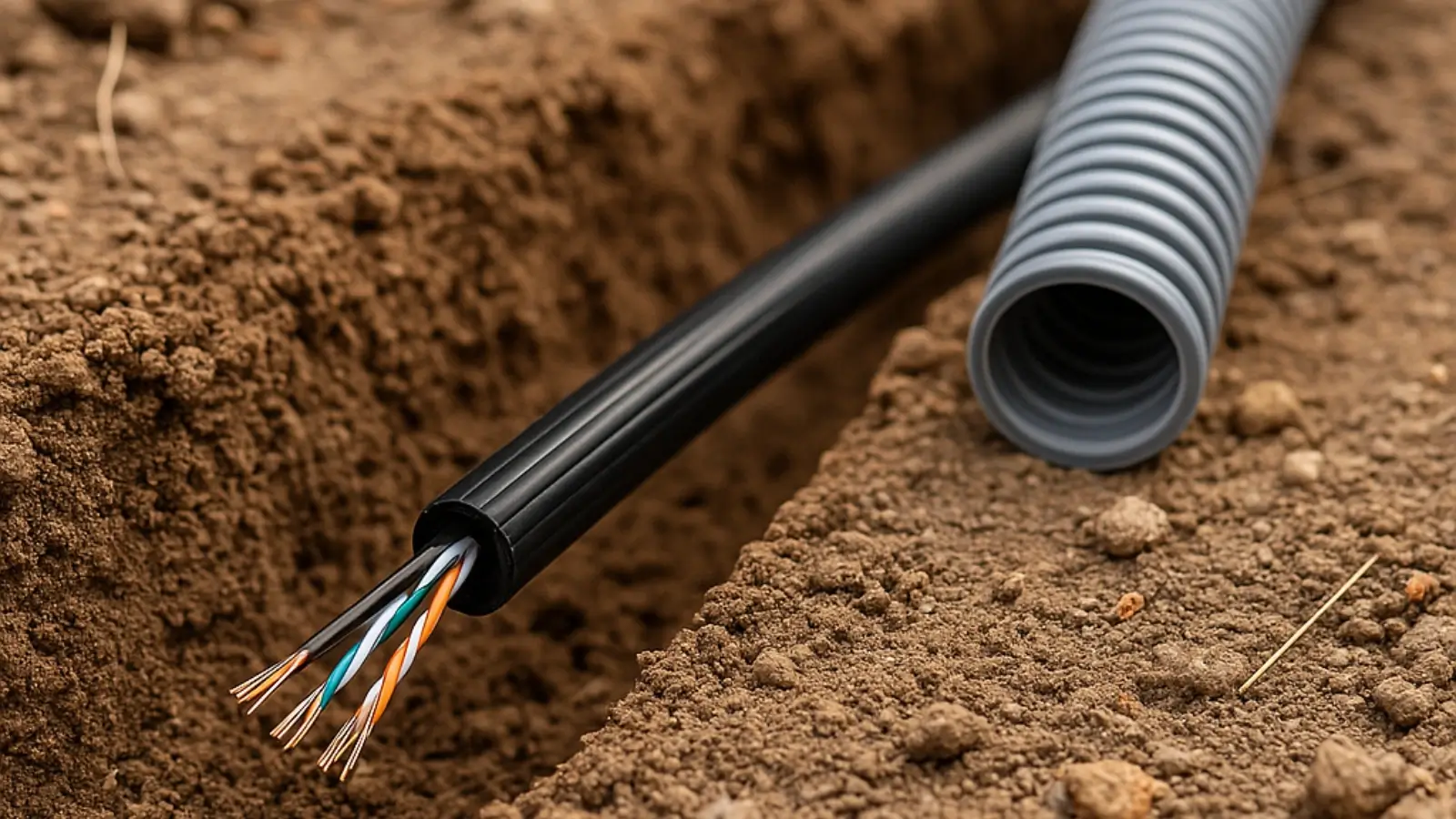


Running Ethernet cable underground sounds simple, until it isn't. Moisture, soil pressure, sharp rocks, and temperature swings can damage standard cable faster than you'd expect. That’s why outdoor network installations require something more rugged. If you’re wiring a detached garage, workshop, or security system, you need a direct burial Ethernet cable built to withstand underground conditions.
Before you grab the first bulk Ethernet cable you find online, there are a few things worth knowing. Direct burial cables are a specific type, and not all “outdoor-rated” products meet the same standards. If you skip the details, you might end up with poor signal quality, cable failure, or costly rework. Here’s how to make a wise choice.
This might sound obvious, but it's the most common mistake. Not all Ethernet cables are rated for burial. Regular indoor cable, or even some outdoor versions, aren’t designed to survive constant contact with soil or moisture. You need a jacket material like LLDPE (Linear Low-Density Polyethylene) that resists water, UV rays, and ground pressure.
Some burial-grade cables are gel-filled to block water intrusion. Others use a dry water-blocking powder that swells when exposed to moisture. Both serve the same purpose: preventing damage from underground water exposure. If you plan to run cable through wet or flood-prone soil, pick a gel-filled option.
Direct burial means long runs. That means signal quality matters even more. Look for cables made with solid copper conductors, not CCA (Copper-Clad Aluminum). CCA might seem like a deal, but it performs poorly over long distances and can cause voltage drops, especially in Power over Ethernet (PoE) applications.
Solid copper delivers stronger conductivity. It’s more expensive upfront, but it lasts longer and performs better, especially when buried. If you want your security cameras or Wi-Fi extenders to work consistently, don’t cheap out here.
The outdoor environment is full of interference sources: power lines, radios, and even lightning. Shielding helps reduce this interference. You’ll see acronyms like UTP (Unshielded Twisted Pair), STP (Shielded Twisted Pair), or F/UTP (Foiled Unshielded Twisted Pair).
For basic home use, UTP might be enough. But if your cable will run near other electrical systems or in high-noise environments, choose a shielded option. Look for aluminum foil or braided shielding. Just remember: shielded cables require proper grounding to be effective. If your setup doesn’t allow for grounding, the shielding might not help much.
Outdoor use doesn’t mean a slower speed. Direct burial Ethernet cables come in several categories, including Cat5e, Cat6, Cat6a, and Cat7. Your choice depends on how much data you need to move and how future-proof you want your install to be.
Cat5e: Up to 1 Gbps at 100 meters. Works fine for light residential setups.
Cat6: Supports 1 Gbps with less crosstalk and better shielding.
Cat6a/Cat7: Handles up to 10 Gbps and longer PoE runs. Great for smart homes or office extensions.
If you’re burying cable once and don’t want to dig it up again soon, opt for a higher category. It’s a small investment for much longer usability.
Direct burial Ethernet cable can technically go straight into the ground. But it still needs protection. Sharp rocks, animals, or garden tools can still damage it. Standard advice is to bury it at least 12 to 24 inches deep. For added safety, consider using conduit, especially in rocky soil or high-traffic areas.
Use rigid PVC or flexible HDPE conduit if you're running long stretches or need to go around corners. While it adds to the cost, conduit makes future cable replacement easier. Also, mark the route above ground; accidental cuts happen more often than you think.
Your local weather plays a role in your choice. In cold climates, frost heave can shift soil and strain your cable. In hot regions, sun exposure at entry and exit points can cause cheaper jackets to crack. Direct burial cable with UV protection is a must if any part of it is exposed to sunlight.
If your area gets a lot of rain or snowmelt, a cable rated for wet environments is non-negotiable. Look for specifications like “CMX outdoor-rated” or “water-resistant jacket.” These small details make a big difference in how long your network stays functional.
Once you’ve picked the right cable, don’t ruin the job with the wrong connectors. Outdoor-rated RJ45 connectors are essential. Regular connectors corrode quickly when exposed to moisture. You can also install weatherproof enclosures at junction points for added protection.
Terminating a shielded cable? Be sure to connect the drain wire to a proper ground. Skip this step, and the shielding becomes useless. It’s worth taking time to get this part right, especially if you're running PoE for cameras or smart home devices.
Finally, when buying, make sure you’re actually getting direct burial cable, not just “outdoor” or “UV-resistant” options. They’re not the same. Stick with reputable suppliers and read the specs. Watch out for vague listings or bulk deals that skip technical details.
If you’re buying a large spool, double-check the length and conductor material. Some listings will say “500ft,” but ship 300. Others swap solid copper for CCA without clear labeling. Don’t rely on the price alone; read the fine print.